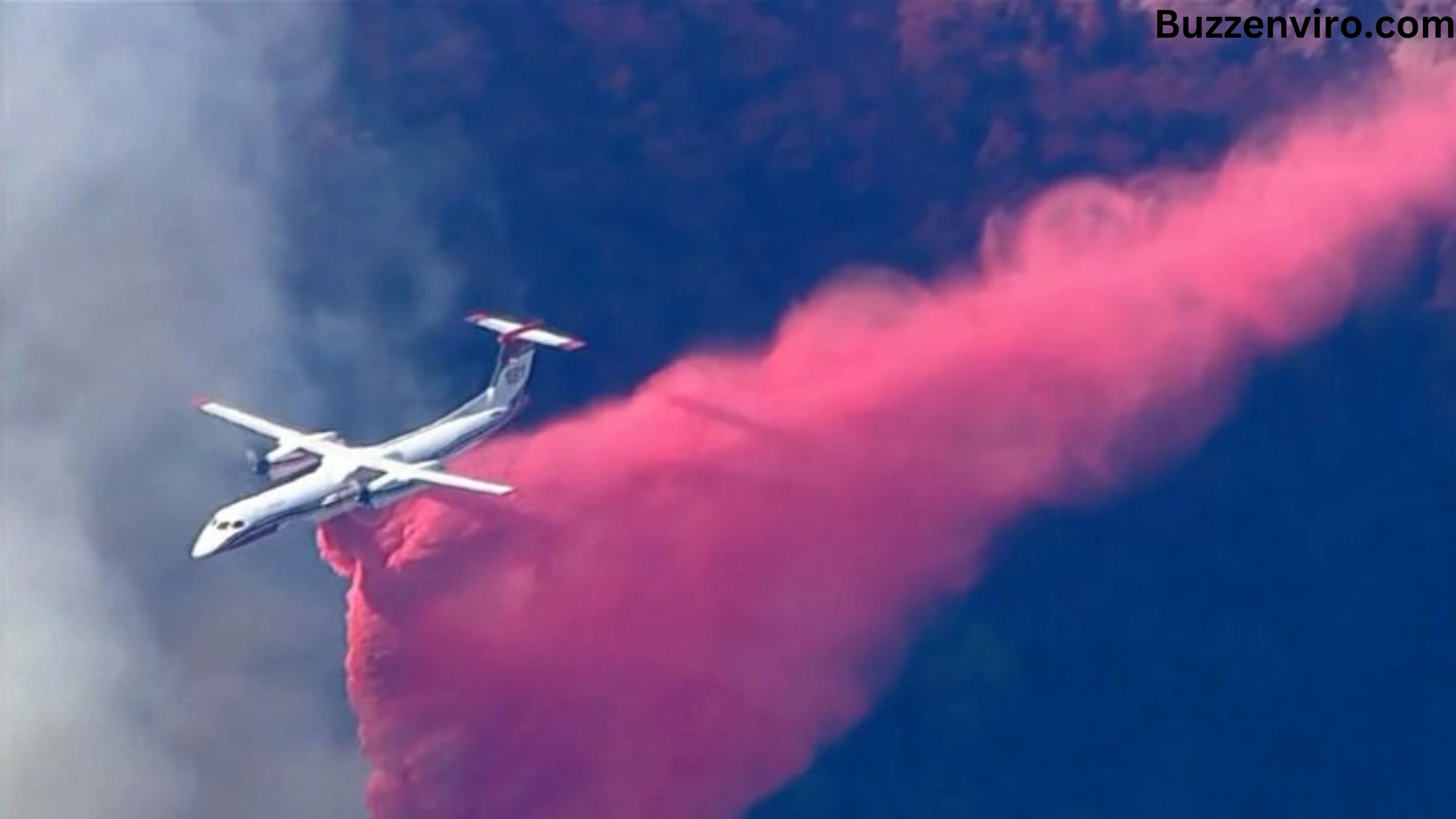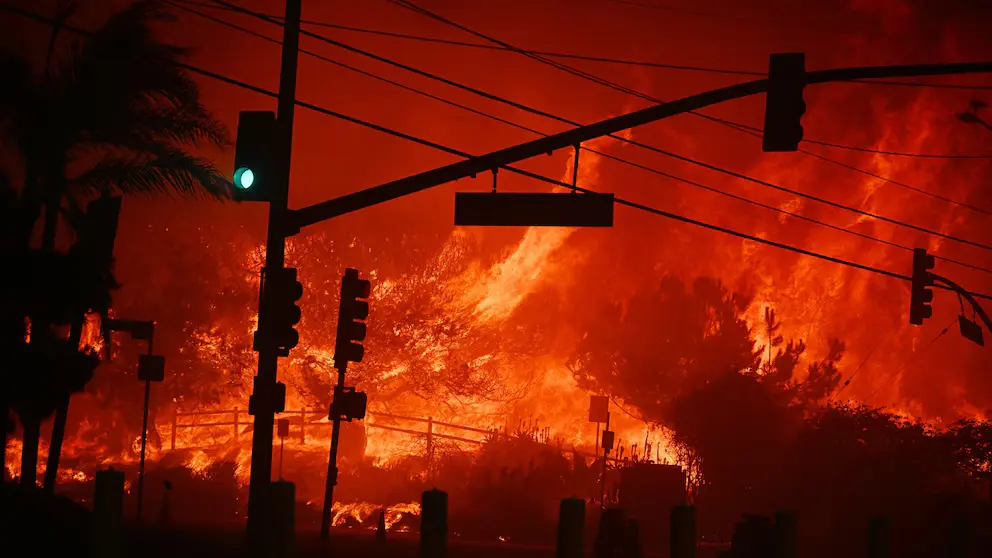In recent days, Los Angeles has been grappling with devastating wildfires that have claimed at least 24 lives and destroyed over 12,000 structures. To combat these blazes, firefighting aircraft have been deploying a distinctive pink fire retardant known as Phos-Chek. This substance plays a crucial role in slowing the spread of fires and protecting vulnerable communities.
What Is Phos-Chek and How Does It Work?

Phos-Chek is a fire retardant primarily composed of water, ammonium phosphate (a common fertilizer), and iron oxide, which imparts its characteristic pink hue. The pink color not only makes the retardant visible to firefighters, aiding in the assessment of coverage, but it also fades over time with exposure to sunlight.
When applied, Phos-Chek coats vegetation and other combustible materials, creating a barrier that depletes the fire of oxygen and absorbs heat. This process effectively slows the rate of combustion, allowing firefighters to gain control over the fire’s spread. The retardant remains effective even after the water evaporates, providing a lasting protective layer.
Phos-Chek’s Role in Los Angeles Wildfires

In the face of the current wildfires in Los Angeles, Phos-Chek has been instrumental in containing the fires. Firefighting aircraft have dropped hundreds of thousands of gallons of this pink retardant to create firebreaks and protect structures. The bright pink color allows firefighters to see where the Phos-Chek has been applied, ensuring comprehensive coverage and effective containment.
However, the effectiveness of Phos-Chek can be limited by strong winds, which may disperse the retardant before it reaches the ground. Additionally, environmental concerns have been raised regarding the potential impact of these chemicals on waterways and wildlife. Some formulations have been found to contain heavy metals like chromium and cadmium, prompting calls for further research to fully understand their environmental impact.
Environmental Considerations and Research on Pink Flame Retardants
While the use of Phos-Chek has been proven effective in reducing the intensity and spread of wildfires, there are some environmental concerns regarding its long-term impact. The chemicals in the retardant, particularly ammonium phosphate, have raised questions about potential contamination of soil and water systems. In addition, studies have shown that heavy metals like cadmium and chromium can be present in certain formulations. These metals, although present in small amounts, could potentially harm aquatic life if they enter waterways. Researchers continue to explore alternative, more environmentally friendly flame retardants that could provide the same level of protection without the negative environmental consequences.
Innovations in Fire Retardant Technology: The Future of Wildfire Management
As the frequency and intensity of wildfires increase due to climate change, the demand for advanced firefighting technologies has also risen. Fire retardants like Phos-Chek have been vital in wildfire management, but scientists and engineers are continually working on new innovations. For example, newer formulations of fire retardants are being developed to minimize environmental impact, using organic or less toxic ingredients. Some are even biodegradable, ensuring that they break down more rapidly without leaving a lasting footprint.
Phos-Chek, the pink fire retardant, has proven to be a vital tool in the fight against wildfires in Los Angeles. Its ability to slow the spread of fires and protect communities is invaluable. While it offers significant benefits, ongoing research is essential to address environmental concerns and ensure the safety and effectiveness of fire suppression efforts.

